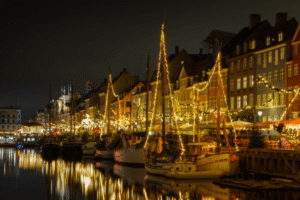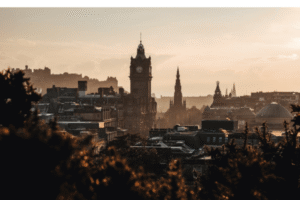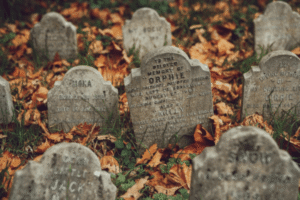Imagine snowy medieval streets glowing under twinkling lights and the scent of spiced wine filling the air. That is what Christmas in Estonia feels like. The season transforms the country into a winter wonderland where every corner bursts with festive spirit. Tallinn, Tartu, and Pärnu dress up with sparkling street decorations and lively markets that draw both locals and travelers.
Despite freezing temperatures that often dip below zero, people wrap up warm to enjoy outdoor concerts, skating, and the cheerful hum of holiday stalls. Wooden huts brim with handmade gifts and fresh gingerbread, while the sound of carols drifts through the crisp air. Every December, the capital becomes one of Europe’s most magical winter destinations. Keep reading to uncover Estonia’s Christmas traditions, best festive spots, and delicious seasonal foods.
Key Takeaways
- Christmas in Estonia blends pagan roots with Christian traditions and Nordic influences.
- The main celebration takes place on December 24 with feasts, candles, and family gatherings.
- Visitors can enjoy Tallinn’s famous Christmas market and many local winter fairs.
- Estonian holiday dishes like blood sausage, sauerkraut, and gingerbread fill every festive table.
- Expect snow, short daylight hours, and a cozy atmosphere perfect for a holiday escape.
Historical Background of Christmas in Estonia
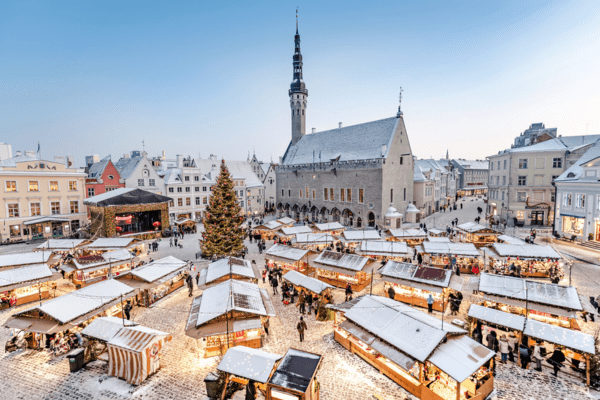
Christmas in Estonia has deep historical roots that reach back to pre-Christian times. The holiday’s Estonian name, Jõulud, comes from ancient Nordic words that described the winter solstice. Before Christianity spread through the Baltic region, Estonians already celebrated this season as a time to honor ancestors and welcome the return of longer days. Fires, feasting, and gift-giving were common even then.
When Christianity arrived in the 13th century, many older customs blended with the new religious meaning of Christmas. Over time, church services and family meals became central to the celebration. Traditionally, Estonians celebrate on December 24, known as Christmas Eve, which is considered more important than Christmas Day itself. Families gather for a big dinner, light candles, and sometimes visit cemeteries to remember loved ones.
During Soviet times, public celebrations were restricted, but people continued to mark the season privately. When independence returned, so did the open celebration of Christmas. Today, towns across Estonia sparkle with markets, music, and lights. The Christmas season officially ends on January 6, the Day of Epiphany, when decorations come down and people enjoy one last festive meal before returning to daily life.
Fun Facts about Christmas in Estonia
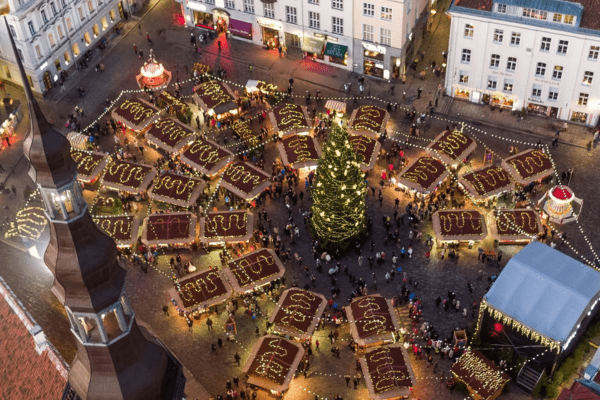
Now that you know the origins of the holiday, let’s explore a few fun and unusual facts about how Estonians celebrate Christmas.
- Tallinn had one of the world’s first public Christmas trees, first recorded in 1441 at Town Hall Square.
- Many families visit cemeteries on Christmas Eve to light candles and remember ancestors, creating glowing landscapes of peace.
- Saunas are part of the tradition, as families enjoy a Christmas sauna to cleanse and relax before the evening meal.
- Gift givers include little elves called Päkapikk, who deliver small presents to children throughout December.
- Christmas music often includes folk instruments, blending old melodies with new festive songs.
Top 5 Spots to Visit in Estonia During Christmas
After learning about the customs, it is time to discover where to experience the best of Christmas in Estonia.
Tallinn Christmas Market
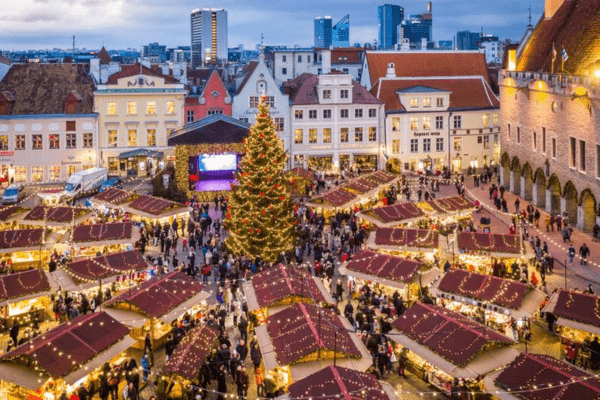
The Tallinn Christmas Market is the crown jewel of the festive season. Located in the medieval Old Town, it fills Raekoja Plats with wooden stalls selling ornaments, sweets, and local crafts. The massive Christmas tree at the center has a tradition dating back more than 500 years. Visitors sip hot mulled wine, enjoy folk performances, and take photos under glowing lights. The market usually opens in late November and continues until early January.
Harju Street Ice Rink, Tallinn

For a truly magical experience, head to the outdoor ice rink on Harju Street near St. Nicholas Church. Surrounded by ancient walls and snow-covered rooftops, it feels like skating inside a fairy tale. The rink opens in December and often stays open until early spring. Skating here under the festive lights is a favorite local tradition for both adults and children.
Tartu Christmas City

Tartu, Estonia’s university town, becomes a “Christmas City” during the holidays. Its Town Hall Square transforms into a warm, welcoming space with cozy cabins, a small skating rink, and glowing decorations. The atmosphere is calm compared to Tallinn, perfect for families or those looking for a quieter experience. The nearby Emajõgi River adds charm to the wintry scenery.
Pärnu Christmas Village
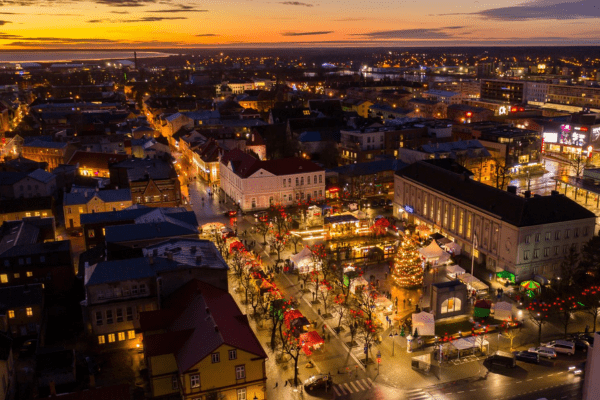
Known as Estonia’s summer resort, Pärnu changes into a winter paradise in December. The Independence Square hosts a charming Christmas Village filled with lights, local food stalls, and music. Families enjoy concerts, warm drinks, and seasonal treats while exploring the seaside city blanketed in snow.
Saaremaa Island
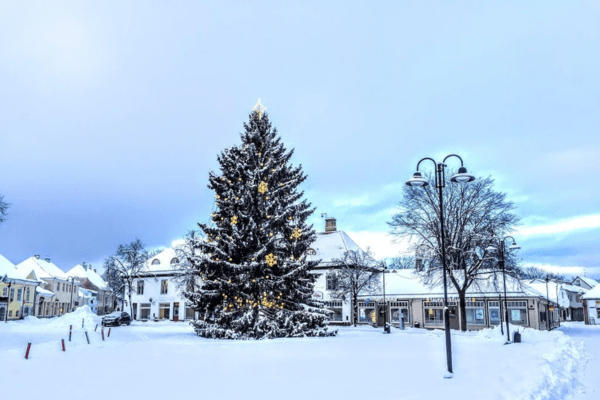
If you wish for something more tranquil, Saaremaa Island offers a rustic Christmas surrounded by untouched nature. The island’s small towns light up with candles, and locals decorate with straw ornaments and traditional crafts. It is the perfect place for peaceful walks, cozy inns, and a slower rhythm of holiday life.
Top 5 Christmas Food and Desserts in Estonia
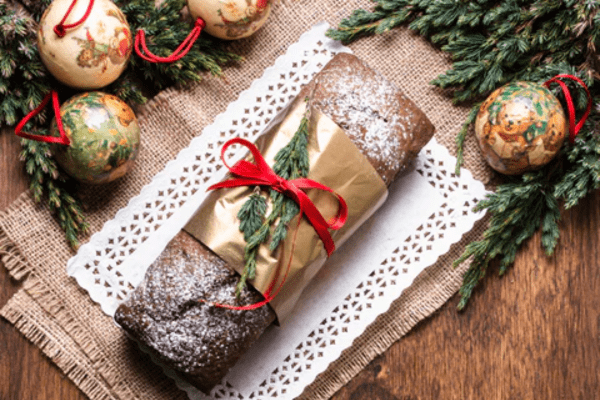
- Verivorst (Blood Sausage): Made from pork blood, barley, and spices, this is the most traditional Christmas dish. It symbolizes abundance and is usually served with sauerkraut and lingonberry jam.
- Hapukapsas (Sauerkraut): Slow-cooked sour cabbage mixed with pork fat or caraway seeds. It balances the richness of holiday meats and brings warmth to cold nights.
- Piparkoogid (Gingerbread Cookies): Thin, spiced cookies often shaped like stars or hearts. Families bake them together and decorate them with sugar icing.
- Hõõgvein (Mulled Wine): A warm drink made from red wine, cinnamon, and cloves. It is sold at every market and perfect for sipping while exploring snowy streets.
- Jõululeib (Christmas Bread): Sweet bread made with dark rye or malt, sometimes containing nuts or dried fruits. It represents prosperity for the coming year.
Conclusion
Christmas in Estonia is a celebration of light, warmth, and togetherness. The mix of traditional customs, sparkling city decorations, and cozy food makes it an unforgettable holiday destination. Whether you spend your evenings under the lights of Tallinn’s Old Town or explore smaller towns filled with authentic charm, Estonia’s Christmas spirit will stay with you long after your trip ends.
To make the experience even more personal, join Amitylux’s private tour in Tallinn. You can fully customize your route to enjoy the best Christmas markets, food, and hidden gems. For more inspiration, discover the top 10 day trips from Tallinn and the best places to visit in Estonia to plan your next journey.
Frequently Asked Questions
How do Estonians celebrate Christmas?
Estonians celebrate Christmas on December 24 with family dinners, church visits, and candle-lighting traditions. People often visit cemeteries, exchange gifts, and enjoy traditional foods like blood sausage and sauerkraut.
Is Estonia good for Christmas?
Yes, Estonia is one of the most magical places to spend Christmas. The snow, festive markets, and cozy restaurants create a warm and cheerful atmosphere despite the cold weather.
What country celebrates Christmas Eve on January 6th?
Estonia’s main celebration is on December 24, but the Christmas season continues until January 6, which marks the end of the festive period rather than the start.
How cold is Tallinn at Christmas?
In December, Tallinn’s temperatures usually range between -5 and 2 °C. Snow is common, and the frosty air adds to the fairytale feel of the city.

